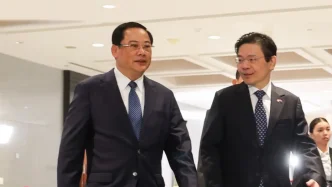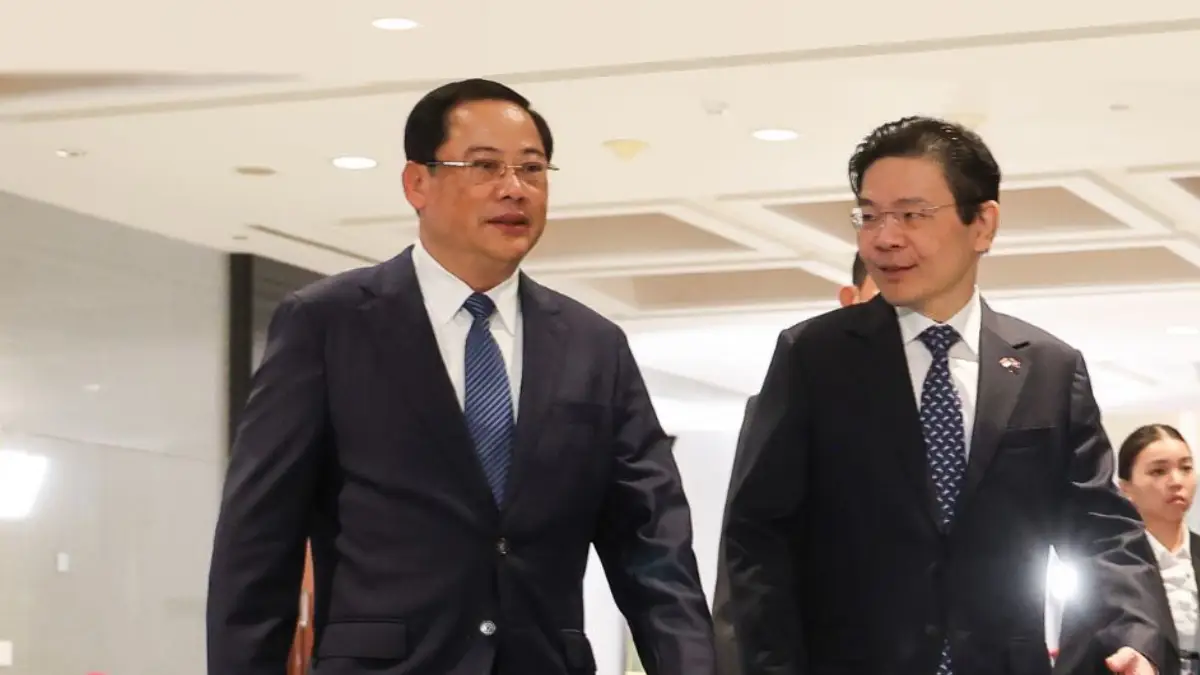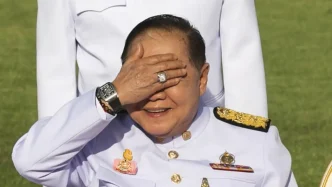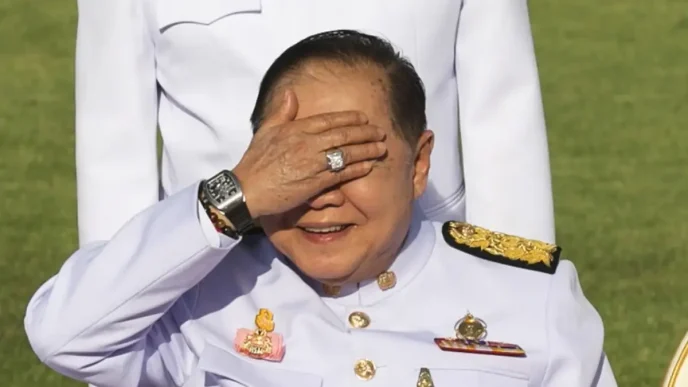In a significant step toward deepening diplomatic and economic cooperation, Laos and Singapore have reaffirmed their commitment to strengthening bilateral ties. During a recent high-level meeting, leaders from both nations emphasized the importance of collaboration in areas such as trade, education, and regional stability, signaling a shared vision for a more interconnected Southeast Asia. As both countries navigate complex geopolitical dynamics within the ASEAN framework, this renewed partnership holds promise for mutual growth and stability in the region.
A Shared Commitment to Cooperation
The recent dialogue between Lao and Singaporean officials underscored a mutual desire to build on existing ties forged through decades of diplomatic relations. Both nations, though differing vastly in economic scale and global influence, share a common interest in fostering regional integration through the Association of Southeast Asian Nations (ASEAN). Laos, a landlocked nation with a developing economy, sees Singapore—a global financial hub—as a key partner in accessing international markets and expertise. Meanwhile, Singapore views Laos as an essential player in ensuring the stability and cohesion of ASEAN, particularly amid rising external pressures from major powers vying for influence in the region.
The discussions, held in a cordial atmosphere, focused on actionable steps to enhance cooperation. Trade and investment emerged as central themes, with both sides expressing optimism about increasing bilateral trade volumes. Singapore, with its advanced infrastructure and business-friendly environment, offers Laos opportunities to modernize its economy through knowledge transfer and capacity building. In return, Laos provides Singapore with access to its natural resources and strategic geographic position within the Greater Mekong Subregion, a critical area for regional connectivity projects.
Economic Synergies and Opportunities
One of the key outcomes of the meeting was an agreement to explore new avenues for economic collaboration. Singapore has long been a leading investor in Laos, particularly in sectors such as energy, agriculture, and tourism. Lao officials highlighted their country’s potential as a destination for sustainable investments, pointing to ongoing reforms aimed at improving the ease of doing business. While specific figures on investment commitments were not disclosed during the talks, the emphasis on economic partnership suggests a trajectory of growth in the coming years.
Beyond direct investments, education and human resource development were identified as priority areas. Singapore, renowned for its world-class education system, has offered to support Laos in training its workforce through scholarships and technical programs. This initiative aligns with Laos’ broader goal of addressing skill shortages and preparing its youth for a rapidly changing global economy. Such efforts are particularly crucial as Laos seeks to diversify its economy away from reliance on resource extraction and toward value-added industries.
Additionally, both nations discussed the potential for collaboration in digital innovation. Singapore’s expertise in smart city technologies and digital infrastructure could play a transformative role in Laos, where urbanization is accelerating. While challenges such as limited internet penetration and technological readiness remain, the prospect of joint projects in this domain reflects a forward-looking approach to bilateral ties.
Navigating Regional and Global Challenges
The strengthening of Laos-Singapore relations comes at a time when Southeast Asia faces mounting geopolitical uncertainties. The South China Sea disputes, economic competition between global powers, and the lingering effects of the COVID-19 pandemic have tested ASEAN’s unity and resilience. Against this backdrop, the reaffirmed partnership between Laos and Singapore serves as a reminder of the importance of intra-regional solidarity.
Laos, as a smaller nation often caught between the interests of larger neighbors, benefits from Singapore’s diplomatic clout and neutral stance in international affairs. Singapore, for its part, recognizes the strategic value of maintaining strong ties with all ASEAN members to counterbalance external influences. The leaders acknowledged the need for closer coordination on regional issues, including climate change, cross-border trade, and security concerns, though specific policy alignments were not detailed in public statements.
The talks also touched on the importance of ASEAN centrality, a principle both nations uphold. By aligning their efforts, Laos and Singapore aim to contribute to a stronger, more cohesive ASEAN that can effectively address shared challenges. This commitment is particularly relevant as the region grapples with issues such as supply chain disruptions and the transition to renewable energy, both of which require collective action.
Historical Context and Future Prospects
The relationship between Laos and Singapore dates back to the establishment of formal diplomatic ties in 1974, shortly after Laos’ emergence as a sovereign state following years of conflict. Over the decades, the two countries have collaborated on numerous fronts, from cultural exchanges to joint participation in ASEAN initiatives. Singapore’s support for Laos’ integration into the global economy, particularly through trade agreements and development assistance, has been a cornerstone of their partnership.
Looking ahead, the recent meeting sets the stage for more structured and frequent engagements. Plans for reciprocal visits by senior officials and the establishment of joint working groups on trade and education indicate a long-term commitment to deepening ties. While immediate outcomes may be incremental, the symbolic importance of this renewed partnership cannot be understated. It reflects a broader trend within ASEAN of smaller states leveraging relationships with more developed members to accelerate their own progress.
However, challenges remain in translating agreements into tangible results. Laos faces structural constraints, including bureaucratic inefficiencies and limited infrastructure, which could hinder the implementation of joint initiatives. Singapore, while resource-rich, must balance its commitments to Laos with its broader regional and global obligations. Both sides will need to prioritize follow-through and accountability to ensure that promises made during the talks materialize into meaningful outcomes.
Implications for ASEAN and Beyond
The strengthening of ties between Laos and Singapore carries implications beyond their bilateral relationship. As ASEAN seeks to position itself as a central player in the Indo-Pacific region, the cooperation between member states of varying sizes and capabilities becomes increasingly vital. The Laos-Singapore partnership exemplifies how diverse nations can find common ground and work toward shared goals, setting a precedent for other ASEAN members to follow.
Moreover, this development sends a signal to external partners about the region’s commitment to internal cohesion. Major powers, including China, the United States, and the European Union, have intensified their engagement with Southeast Asia in recent years, often with competing agendas. A united ASEAN, bolstered by strong bilateral relationships like that of Laos and Singapore, is better equipped to navigate these external dynamics without being overly swayed by any single actor.
At the same time, the partnership highlights the disparities within ASEAN that must be addressed for the bloc to achieve its full potential. While Singapore boasts one of the highest GDP per capita figures in the world, Laos remains among the region’s least developed economies. Bridging this gap through targeted cooperation in areas like education and technology could serve as a model for reducing inequality across ASEAN, fostering a more inclusive regional framework.
A Path Forward
As Laos and Singapore move forward with their renewed partnership, the focus will likely remain on practical, results-oriented collaboration. While high-level meetings and joint statements provide a necessary foundation, the true test lies in the implementation of agreed-upon initiatives. Both nations have expressed a willingness to work closely together, but sustained effort and mutual understanding will be essential to overcoming the inherent challenges of such a partnership.
For Laos, the relationship with Singapore offers a pathway to economic diversification and regional integration. For Singapore, it reinforces its role as a mentor and partner within ASEAN, contributing to the bloc’s collective strength. As the two countries build on their shared history and complementary strengths, their collaboration could pave the way for broader regional advancements.
Yet, questions linger about how this partnership will evolve in the face of shifting geopolitical currents and domestic priorities. Will the commitments made today translate into lasting change, or will they be overshadowed by more pressing concerns? Only time will tell, but for now, the renewed ties between Laos and Singapore stand as a testament to the enduring value of diplomacy and cooperation in an increasingly complex world.















